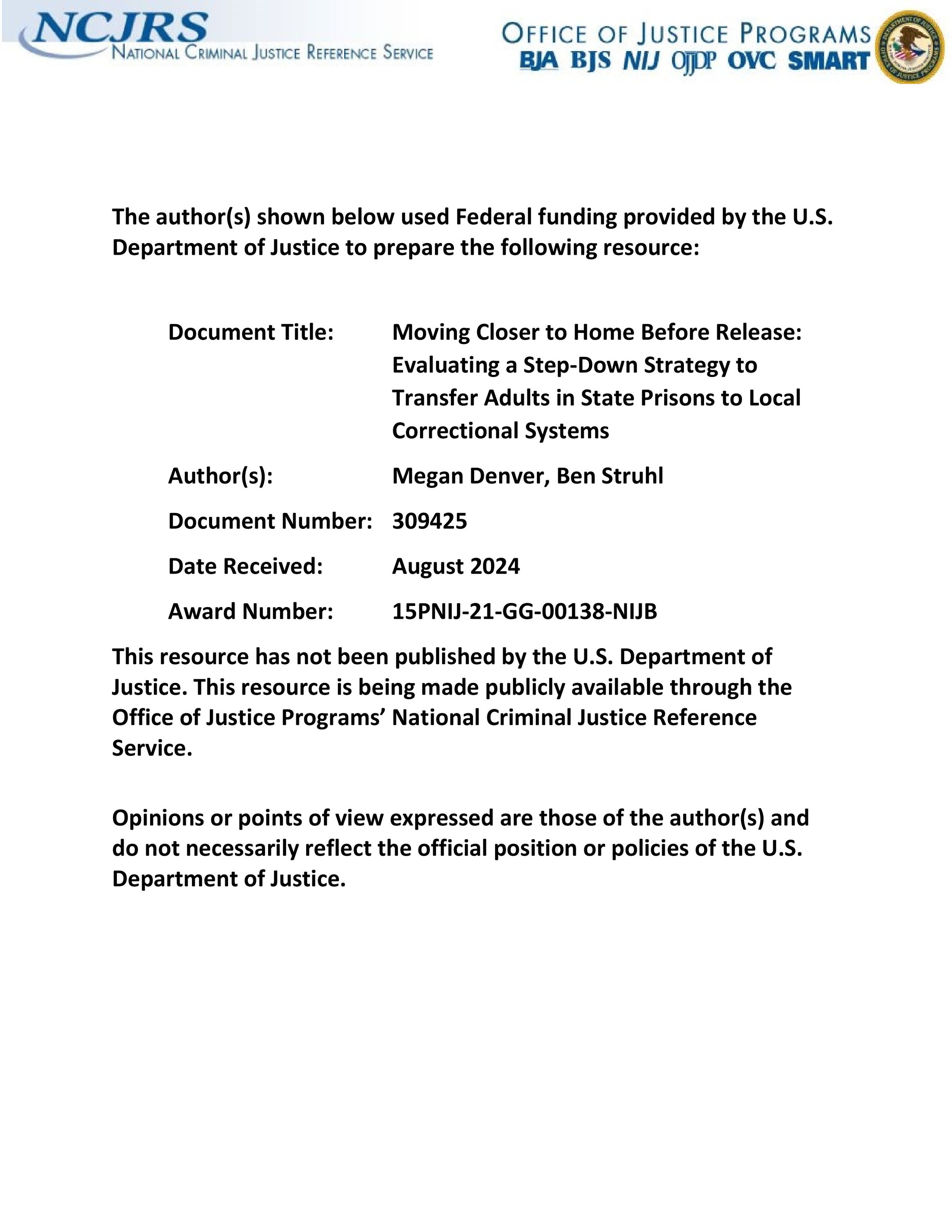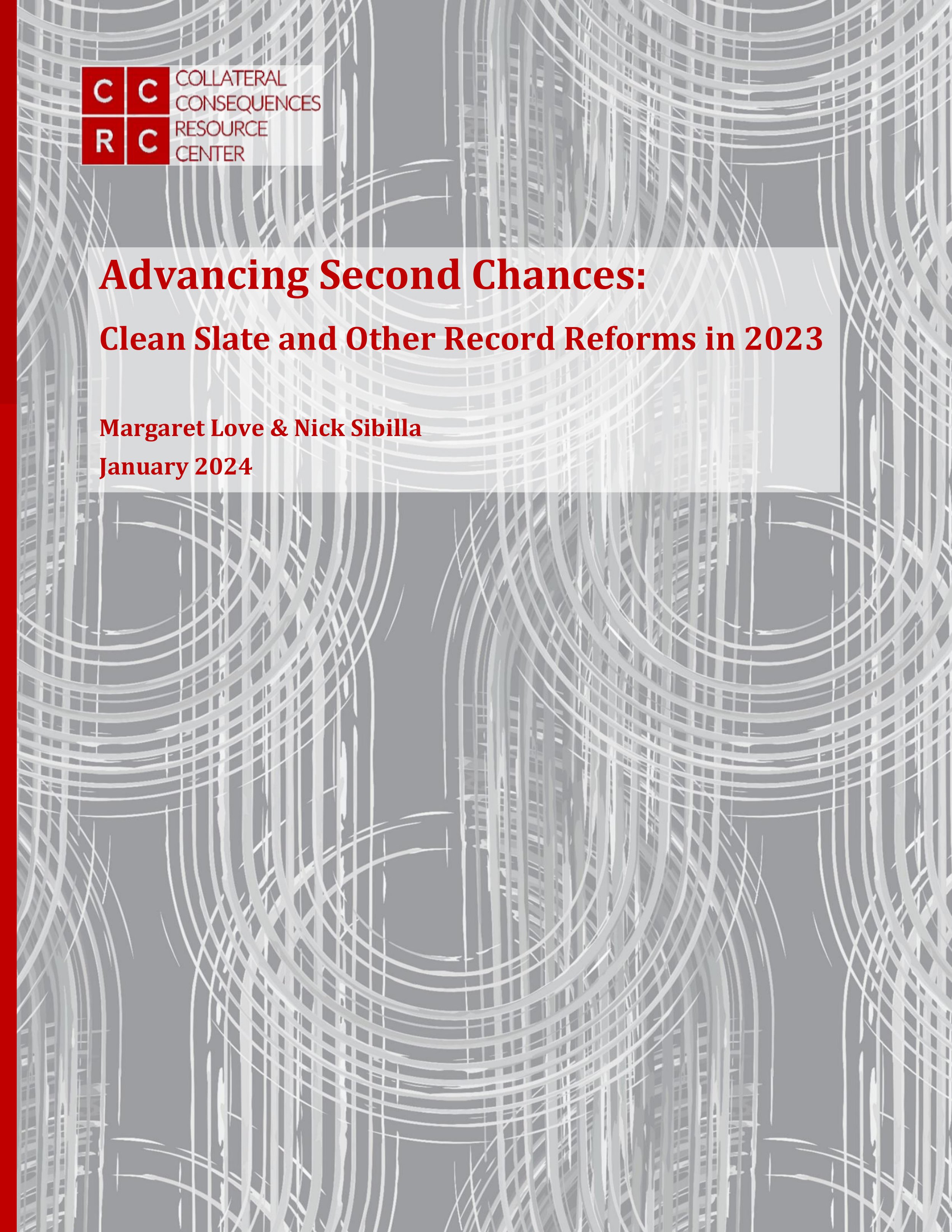By Jessica Reichert, Ryan Maranville, Eva Ott Hill
Introduction
In 2022, over 16,000 persons exited prison in Illinois (Illinois Department of Corrections, n.d. b). Employment is a major factor in successful community reintegration after prison release. Not only is it important to formerly incarcerated individuals, families, and their communities it is also associated with lower rates of recidivism (Berger-Gross, 2022; Flatt & Jacobs, 2018; Nally, et al., 2014; Yang, 2017). However, formerly incarcerated persons face many barriers to employment, such as stigma by employers; restrictions or prohibition to some jobs because of criminal records; lack of or gaps in work experience; and deficits in human capital, such as inadequate education, training, or vocational skills (Pogrebin et al., 2014). These barriers keep the formerly incarcerated from being competitive in the labor market. Even years after release, these individuals consistently have low rates of employment (Looney & Turner, 2018). The jobs that are available are often low-skill, seasonal, temporary, and part-time. They provide low wages and limited, or no, benefits. While most individuals struggle to obtain employment post-release, certain groups are at a greater disadvantage because of race and gender (Pew Charitable Trusts, 2010; Western and Sirois, 2019). Both race and gender affect earnings and employment (Carson, et al., 2021; Couloute & Kopf, 2018). Prison and community reentry programs can help increase individuals’ probability of post-release employment. However, such programs are not sufficiently available to serve all who need them.
In order to examine employment following release from Illinois prisons, ICJIA collaborated with the Illinois Department of Corrections (IDOC) and the Illinois Department of Employment Security (IDES). We sought to answer the following main research questions:
What types of employment did formerly incarcerated individuals obtain after release?
What were the employment and wage trends of individuals released from prison in recent years?
What were the characteristics of those who obtained and did not obtain employment?
What individual characteristics and employment sector impacted length of employment and earnings?
Methodology
We matched individual IDOC state prison data to IDES state employment data. This research was approved by the ICJIA Institutional Review Board. Our sample was made up of 4,430 persons who exited prison in 2018, and we tracked their employment through 2021. Most of the individuals in the sample were Black males with an average age of 37.
We ran descriptive statistics, t-tests, and linear regressions to examine employment patterns and outcomes. The data were analyzed using IBM SPSS Statistics, Version 23.0. We performed independent sample t-tests for those who were employed to examine differences in mean length of employment and mean wages based on industry. We performed linear regression to examine differences in sample characteristics and length of employment and wages following prison release.
Study limitations include the absence of some variables of interest, such as vocational program participation and education levels of releasees. We also were unable to know whether individuals had non-taxed or out-of-state employment or if they were unable to work due to jail stays, disability, or death. Finally, the COVID-19 pandemic had an impact on employment during two of the years that we examined (2020 and 2021). This impact means our trends will vary from previous or subsequent years of data.
Discussion of Key Findings
Formerly Incarcerated Had High Unemployment
Following release from prison people in the sample had a relatively high unemployment rate of 45.5%. This rate was higher than both the state rate and rates found in prior studies (Couloute & Kopf, 2018; U.S. Bureau of Labor Statistics, n.d.-a). A possible explanation is that COVID-19 affected rates of employment/unemployment in the United States beginning in early 2020 (U.S. Department of Labor Statistics, 2021). At present, however, the United States is experiencing a lower unemployment rate than when COVID-19 took hold in 2020 (U.S. Bureau of Labor Statistics, 2023). This increased demand for workers could potentially benefit the formerly incarcerated. As prior research has indicated, ex-prisoners and their employment have been sensitive to labor market conditions and job availability upon release (Schnepel, 2018; Yang, 2017).
Individuals Had Relatively Low Earnings Post-Release
The average income for those employed in our sample was $8,998 annually, which is lower than the 2021 individual federal poverty level (U.S. Department of Health and Human Services, n.d. b). Low earnings for formerly incarcerated persons have been found in prior studies (Looney & Turner, 2018; Western, 2018). In our sample, the hourly rate, as calculated by our team, was $10.42 per hour, which was lower than the state of Illinois rate of $11 (U.S. Department of Health and Human Services, n.d.-c). Other researchers have also found low hourly rates (Visher et al., 2008). In addition, findings from prior studies have led researchers to conclude that employment is vital to meet basic needs and to lower recidivism for the formerly incarcerated (Flatt & Jacobs, 2018; Nally, et al., 2014; Yang, 2017). Coupled with such findings our evidence indicates a need for increased in-prison educational and vocational programming along with a reduction in socially held stigma and unnecessary background checks (Finlay, 2009).
Persons who Were Black Experienced Lower Employment and Wages Than Those of Other Races
In our study a higher proportion of Black persons than persons of other races were unemployed. They also had lower wages after release. Such disparities have been found in prior literature (Pew Charitable Trusts, 2010; Western and Sirois, 2019). Prior literature also has indicated that challenges to employment following prison were greater for Black persons (Pager et al., 2009; Wheelock & Uggen, 2005; Western & Sirois, 2019) due in part to a lack of employment opportunities (Clear et al., 2003; Morenoff & Harding, 2014; Roberts, 2004; Sampson & Loeffler, 2010). Therefore, there is a need for investment in prisoner reentry and support services (Reichert, 2019; Travis et al., 2001; Visher & Farrell, 2005).
Women Worked More but Earned Lower Wages
Following prison, women in our sample were slightly more likely to be employed than men, but they earned less. This finding is consistent with prior research into women’s employment after incarceration (Carson, et al., 2021; Couloute & Kopf, 2018). Researchers have found, for example, that formerly incarcerated women and men encountered similar barriers to post-release employment, such as a lack of education and job skills and overall limited career opportunities. However, in this study, women had very different experiences and responsibilities both prior to incarceration and after release. Women had much higher rates of prior physical or emotional abuse, which can create obstacles to employment and contribute to their having to live in poverty. In addition, since formerly incarcerated women were more likely than men to be primary caretakers for minor children, they faced this additional obstacle to post-release employment (Seville, 2008). As one government report advised, women should be supported to find employment, learn skills, and gain other supports, such as childcare (Substance Abuse and Mental Health Services Administration, 2020). For women in the IDOC system only one work release center is available. This center has demonstrated success in improving employment outcomes for women post-release, thereby suggesting the need for and feasibility of its potential expansion (Jung & LaLonde, 2019).
More Employment and Higher Pay in Certain Sectors
The Bureau of Labor Statistics categorizes work into two supersectors: service providing and goods-producing. Of the people in our sample who were employed, over 91% were employed in the service providing supersector as opposed to 32% in the goods-producing supersector. (Some persons worked more than one job across supersectors during the time period studied.) Of those working in the service providing supersector, the largest proportion - over one-third - worked in the “administrative support and waste management and remediation services” sector. During the COVID-19 pandemic, however, this sector had a sharp decline, which may have affected, or continue to affect, formerly incarcerated workers (U.S. Department of Labor Statistics, 2021). Although typically offering low wages, jobs in this sector can be attained by those with limited skills; and employees in this sector are projected to remain in demand (Illinois Department of Employment Security, n.d.). Overall, the overarching service providing supersector employed a large majority of our sample but those who worked in the goods-producing supersector worked longer and had higher wages. Goods-producing industries include agriculture, forestry, fishing, and hunting; mining; construction; and manufacturing. The highest earnings for our sample were in educational services followed by manufacturing, construction, management, and wholesale trade. Again, considering current low unemployment and high demand for workers within the goods-producing fields, employers may be extra willing to hire formerly incarcerated persons (James, 2023). Job training prior to or after release can help the formerly incarcerated obtain promotions and higher wages (James, 2023) and could orient them towards sectors which demonstrate a willingness to both hire and pay well.
IDOC Supportive Programs were Associated with Better Employment Outcomes
We found that participants in IDOC Kewanee Life Skills Re-Entry Center and Illinois work release centers were more likely to have longer employment and higher wages post-release. Prior research on similar work release programs has revealed positive outcomes for participants, such as increased employment and hours worked. This finding suggests that these programs are viable substitutes for traditional correctional programming and ought to be expanded if resources allow (Duwe, 2013; Jung, 2014; Visher et al., 2004). Further research should be conducted to best determine their potential for aiding in successful reentry.
Conclusion
Our sample of 4,430 persons released from IDOC in 2018 had high unemployment and low earnings when tracked through 2021. We found additional employment and wage disparities for Black persons and women. The largest proportion of workers, nearly one-third, worked in administrative support and waste management and remediation services. Those working in the education sector made the highest wages. Those who worked in goods-producing industries rather than service industries had higher wages and longer lengths of employment. Based on our findings, the state as well as local communities should invest in reentry support. Fortunately, the state is experiencing low unemployment and a demand for workers, so this may be a timely opportunity to assist formerly incarcerated individuals with job attainment. Jobs will help them pay for basic expenses for themselves and their families as well as reduce recidivism and taxpayer costs.
Chicago: Illinois Criminal Justice Information Authority. 2023. 38p.





















